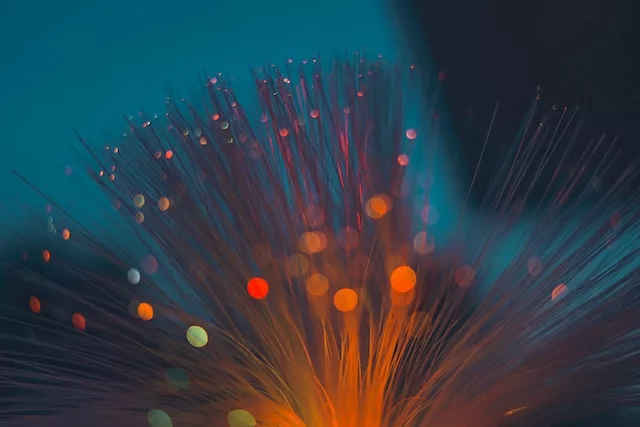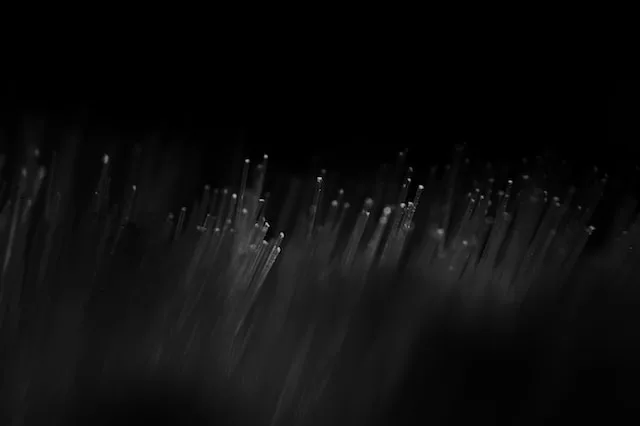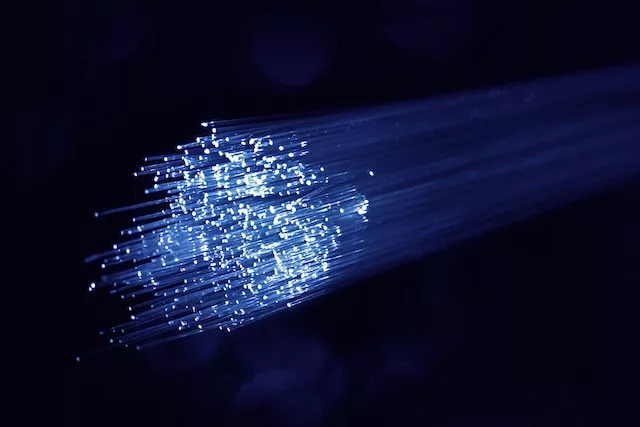Not much is known in the mainstream about dark fibre, which is surprising for an industry worth $5.04 billion and which is expected to reach $13.85 billion by 2030. While it’s not nearly as mysterious as the name implies, it’s something every growth-minded business should be aware of, particularly if you have any active stake in 5G networking. The synthesis of 5G and dark fibre offers a cost-effective, reliable, and scalable infrastructure that enables faster deployment of high-speed, low-latency, and high-capacity 5G services.
What is dark fibre?
Dark fibre refers to unused (or “unlit”) fibre optic cables that have already been laid but are not currently being used to transmit data. Telecommunications companies often install dark optics in order to lease or sell the infrastructure to other companies or organisations.
For example, businesses can rent dark fibre for their own private networks. Typical examples include research institutions, large corporations, or government agencies. It’s also used by schools and large-scale e-commerce retailers.
Dark fibre has a relatively short history in the UK compared to other developing nations. Companies like Colt, Cable & Wireless, and Energis, began laying fibre optic cables across the UK in the late 1990s. Many of these companies were left struggling after the dot com bubble burst, leaving a surplus of unused dark fibre infrastructure.
In the mid-2000s, the UK government launched several initiatives to make utilising dark fibre more accessible, particularly for SMBs. This includes a regulatory framework for an “open access” market to encourage competition.
Dark fiber’s role in 5G network deployment

As the latest generation of wireless communication technology, 5G promises to deliver faster speeds, greater bandwidth, lower latency, and more reliable connections than its predecessors. In most real-life instances, 5G offers nearly double the bandwidth of 4G networks. This allows businesses to greatly scale their networking capabilities, especially in regard to transmitting vasts amount of data faster.
5G can also be more energy efficient and allows for the creation of virtual network slices, which has other operational implications.
However, there are some challenges facing the implementation of ubiquitous 5G technology that can only be solved with enhanced infrastructure:
- 5G signals have a shorter range and are easily blocked by obstacles such as buildings and trees. More cells and base stations are needed to ensure adequate coverage and capacity.
- 5G powers high-bandwidth applications, such as virtual/augmented reality, autonomous driving, and remote surgery. This requires higher capacity networks that can handle the demand for fast and reliable delivery of massive volumes of data.
- 5G is expected to drive a huge increase in the number of connected IoT (Internet of Things devices. This will create a need for a larger network infrastructure to support all these new connections and devices.
This is where dark fibre comes in. This existing but underutilised infrastructure may provide the foundation to support 5G network deployment in a cost-effective and scalable manner without compromising speed or bandwidth.
Benefits of dark fibre for 5G

For several reasons, dark fibre infrastructure seems like the perfect candidate to solve the challenges associated with large-scale 5G deployment:
- Scalability and flexibility for future network expansion: The need for 5G networking will only continue to grow. Any solution needs to be future-proof by offering vast scalability and flexibility. Dark fibre allows network providers to quickly, easily, and cheaply add network capacity on demand. Additionally, dark fibre provides complete control over the network infrastructure, allowing customisation to meet specific application requirements.
- Reduced latency for improved user experience: Even compared to 5G, the potential speeds offered by fibre optic is unmatched, with practical speeds of up to 100GB and potential speeds of 1 Petabit. So, providers won’t have to make the same compromises when augmenting their 5G networks with older technologies, like 4G or ADSL. Customers won’t feel a noticeable decline in their network performance or capacity by leveraging fibre optic.
- Enhanced reliability and resiliency of the network: As a physical medium, fibre optic cables are less susceptible to electromagnetic interference and signal degradation than wireless or copper-based alternatives. By using dark fibre, 5G network providers can also avoid sharing network resources with other parties, reducing the risk of congestion and outages. Plus, dark fibre networks can be designed with built-in redundancy and failover mechanisms, preventing disruptions and ensuring critical services remain available.
- Lower operational costs and energy consumption: By leasing or purchasing existing dark fibre networks, providers can avoid the significant capital costs associated with building new fibre optic infrastructure from scratch. Fibre networks are also more energy-efficient and require less maintenance than traditional copper-based networks.
Real-world examples of dark fibre and 5G integration

For now, the global dark fibre market seems somewhat consolidated, with a few major players who could purchase or develop this infrastructure in the first place. Some of the largest global players include AT&T Intellectual Property, Verizon, CenturyLink, Comcast Corporation, etc.
However, due to its very nature, it’s an industry built on B2B relationships and collaborations. Here are some of the more notable moves in recent times:
- In the UK, CityFibre was awarded a multi-million-pound contract by Three UK to provide dark fibre infrastructure for its 5G network rollout. It involves deploying an additional 1,300 key mobile masts across 59 towns and cities. Under the agreement, CityFibre will provide Three UK with access to its national network of dark fibre assets, enabling Three UK to deploy its 5G network rapidly.
- In the US, Zayo Group has partnered with a number of wireless carriers, including Verizon, to provide dark fibre infrastructure for their 5G networks. Zayo’s dark fibre network spans over 130,000 miles across the US and Europe, providing carriers with a ready-made infrastructure for deploying 5G services.
- In Germany, Deutsche Glasfaser has partnered with 1&1 Drillisch to provide dark fibre infrastructure for its 5G network. The partnership involves leasing existing dark fibre assets from Deutsche Glasfaser to support the deployment of 5G services across Germany.
Unleashing the potential of dark fiber: A game changer for the 5G era
As an unused resource, dark fibre can be a cost-effective and scalable way to provide high-speed, low-latency, and high-capacity data connections. This makes it ideal for deployment alongside 5G networks to augment its already impressive speeds and bandwidth capacity while helping to overcome some of the physical limitations of 5G technologies. All-in-all, it offers providers and users alike the to expand their capabilities in a scalable, flexible, and reliable way. That will be a prerogative in a future where the continued boom in big data and IoT is driving unprecedented depends on high-capacity, fault-tolerant networking.







